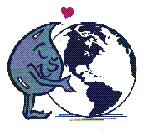|
A Renter's Guide to the Wise Use of Water
A PDF version of this publication is also available. (602 Kb) Keep our drinking water clean and affordableIt's easy to take drinking water for granted. Whenever we turn on the tap, out comes clean, drinkable water. What few of us realize is that every drop of water that comes out of the tap has been carefully treated to remove impurities and make it safe for drinking. Water is continually recycled and reused. It's not just used once and flushed away forever, as our "flush and forget" attitude suggests. Every time we flush, we use up to 18 litres of purified drinking water – water that is immediately polluted, making it useless until it has been thoroughly treated again. Municipal water supply and sewage treatment Processing all that water is an expensive and complex job. The more water we use, the more we pay. The less we use or abuse it, the less it costs to make it safe to return to the environment. As a renter, you may not know how much water you use. After all, you probably never see a water bill or have access to your water meter. But keep in mind that high water costs can only be passed on to one person, you, the tenant. How much water do you use?The average person in Canada uses about 335 litres of water per day – over twice as much as Europeans. Toilets account for 30% of your total indoor water use. Combined with showers and baths, the bathroom represents about 65% of your home's total indoor water use. Small changes can make a big differenceBy making small changes to your water use habits, and by using less water, you can help keep our drinking water clean and affordable. Here's how:
Down the drain?To help reduce pollution of our waterways – and our sources of drinking water – use low phosphate and biodegradable cleaning products. Never put garbage of any kind down the drain, toilet or storm sewer. Cooking grease, household cleaners and other chemicals can be harmful to the environment, not to mention your pipes. Diapers, dental floss and plastic tampon holders all create problems at wastewater treatment plants. Treat our water with care – it's non-renewable!  REMEMBER, the WISE USE OF WATER will save you money and help improve the environment. 
An environmental citizen uses water wisely |
|
|
||||||||||||
|
| Help
| Search
| Canada Site |
|
||
|
The Green LaneTM, Environment Canada's World Wide Web site
|
||
|
|
||
|
|
||